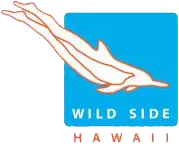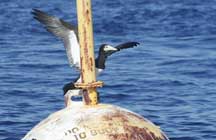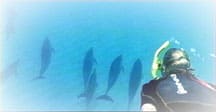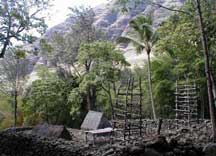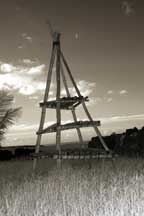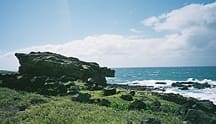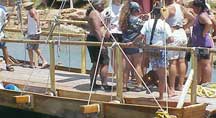West Coast of O’ahu Activities
(places to go, things to do, “secret” tour activities on the Wai’anae Coast!)
Waianae Drive Guide
Nature has always mattered here. Six centuries before westeners came, Polynesians arrived to fish its teeming waters. They named Wai’anae for this abundance – Wai for “water” (or rich) and anae for the prized mullet fish. Oahu’s Wai’anae Coast is known for having some of the State’s most beautiful panoramas, brilliant sunsets, and excellent underwater sporting. “Country” to O’ahu residents and home to equally colorful greats such as women surfing legends and mentors Rell Sunn, Betty Winstead, and music giant Braddah Iz (Israel Kamakawiwo`ole), the Waianae coast is home to the largest population of Native Hawaiians in the State, and thus the world. Her people are geographically and socially separated from city life and city ways. In the midst of a declining Hawaiian culture, Wai’anae still offers true Hawaiian values and practices.
Development is relatively low density in the “other O`ahu”, and there are still many small farms typical of an agricultural village. These farms supply the most organic on O’ahu. Wa’ianae is historically known and infamous as a fishing village due to productive ocean waters. Predominant features are the longest white sand beaches on O’ahu, amphitheater valleys and dramatic volcanic mountains – in a majestic range that embraces the entire community.
Some claim that among residents of the leeward coast are kanaka maoli (native Hawaiian) descendents of those who fled Kamehameha the Great’s conquering warriors in 1795. In Hawaiian cosmology, Ma’ui — the famed demigod who appears in historical chants throughout Polynesia—is said to have been born on this coast; his mother, the goddess Hina, also resided here, pounding kapa in a cave to the south of Wai’anae. Archaeologists have documented scores of hei’au and other religious sites up and down the coast and deep into its valleys. The Northwest tip, Ka’ena Point, is sacred ground—a jumping-off point for souls departing this world for the next.
William Aila tells the Story of Leeward O’ahu from Don Hutton on Vimeo.
There are still large stretches of land that have no structures and that are visited only by those who know the land through family and word of mouth Many historic sites can only be viewed from the water.
A sacred land, where Hawai’ian royalty was trained in arts of history, weaponry, celestial navigation; and fishing, agricultural and social traditions, brings familial pride. This is the place where one becomes so aware that a fervent culture is fighting to be preserved and understood.
Sail with Whales, Dive with Dolphins, Snorkel with Turtles
Looking for unique things to do in secret O’ahu places? Our marine biologist crew leads sailing journeys with focus on whale, turtle reef and dolphin encounters, both above and under the water. “Wild Side” has been involved in studies and conservation of the diverse marine life on Oahu for over a decade. Located on rural coastline of “hidden O’ahu”, share the secrets they have found away from the city life of Waikiki and Honolulu; including swim with dolphins oahupristine resting grounds of resident Hawaiian spinner dolphins. Swim with the dolphins in nearshore waters and watch their natural behavior in the wild. Visit an obscure area hosting one of the fastest growing and largest populations of humpback whales (seasonal) on O’ahu; and a unique feeding ground for the green sea turtle, with its own underwater “cleaning station” on their cruises.
Makaha, a Less Traveled Hidden Jewel of Oahu – Makaha International Surfing Beach
Makaha can mean the eye (maka) that breathes (ha). In this very sacred valley there are many life-like stone formations seeming to be watching your every step. Hawaiians believe each stone, as well as plant, to be living beings – alive with mana (the life-force). This, combined with the danger of robbers hiding in the bushes must have given any traveler pause when passing by Makaha alone.
Makaha’ Beach’s claim to fame is that its an internationally renown as a superb site for surfing. The offshore Makaha Caves have underwater caverns, arches and tunnels at depths of 30 to 50 feet and are a popular dive spot on the Wa’ianae Coast in the calmer summer months.
Makaha Beach is one of the better beaches offering good swimming, bodyboarding and surfing conditions. Easy to find, nice diverse reefs, plenty of lifeguards used to tourists (expect novice levels). Most important, you can almost always enter and exit from the middle of the beach where there exists a deeper sand channel. Waves can be breaking on either side (winter months, summer is lake-like) but you have a good wide area that is safe from waves and shore break.
Enter at the sand channel, swim past any wave action and then go to the reef on either side, exit the same way. Take our snorkel tour to access the “secret”, locally-protected areas.
Kane’aki Heiau, Makaha
Looking for cultural things to do on O’ahu? The ancient gods of Hawai’i made specific places on the island sacred. These places include dwelling places of the gods and their disciples as well as selected observation points, cliffs, heiau, volcanoes and many more. They are known as ‘wahi pana or legendary places of Hawai’i. Even today they possess mana (spiritual power).
One such ancient Hawaiian Hei’au can be found deep in Makaha Valley and is one of Hawaii’s best maintained archeological sites. The Kane’aki Hei’au was built in the fifteenth century and was known to be both an agricultural hei’au and a war temple. Having researched the site, archaeologists believe the hei’au first served Lono, the god of agriculture and peace, then later was dedicated to Kü, the god of war. At this point human sacrifices were performed on the first prisoners of war.
Kaneana Cave, Makua
Near Makua Beach about one mile before the end of Farrington Highway, the shark/man deity made his home Makua Beach Culture in this sea cave which is volcanic and coral in formation.
Makua Valley contains more than 40 endangered plant and animal species. Abundant archaeological evidence suggests that Makua Valley had a thriving Hawaiian community during pre-contact days. and is said to be a sacred place to native Hawaiians, the mythic birthplace of the Hawaiian people.
Ka’ena Point
Ka’ena Point has historically been used for fishing, opihi picking, and recreation. Designated a Natural Area Reserve in 1983, it is a seasonal nesting area for Laysan Albatross, a resting area for Hawaiian Monk Seals, and home to many rare native plants. A journey to the land time forgot, it is also a significant area to Hawaiian culture, home to many legends and the “jumping off place” (pictured) to Po, the eternal resting spot of the gods, where land, sea and time are woven into one fabric of space and time.
The E’ala
Double Hulled Polynesian Voyaging Canoe at Waianae Boat Harbor. The E’ala was built at Wai’anae on the Leeward side of O’ahu by the Wai’anae Civic Club in 1981. The E’ala was built for the children of Wai’anae, to experience firsthand the sailing a Wa’a Kaulua (Double Hulled Canoe), how important the canoe was to the life of the ancient Hawaiians; and to instill pride and self-esteem to the native-Hawaiian people who living here on the Leeward Coast.
Ka’ala Farms
In an area of Wai’anae once known as the “poi bowl” of Oahu, family lo’i (taro fields) are worked at Ka’ala Farms; part of a cultural learning center where kalo (taro) farming methods are taught to school children and families as part of a community development program. The upper watershed is used mainly by pig hunters and by halau hula to gather materials for dances and ceremonies. The coastal plain area is used by produce farmers and dairy farmers although housing often replaces these farms, especially along the coastline.
